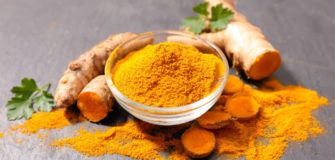The Umbrella That Protects

The first in a two-part series on toxins, pollutants and the protective factor.
By Dr Ulhas Ganu
There is a feeling that cancer occurrence is on the rise. Lifestyle has been attributed as one of the biggest factors contributing to the increased incidence of cancer. India is a vast country and though people may have similar food items as part of their staple diet, the styles of cooking differ and that can have a lasting effect on their health. I recall the definition of man by a sociologist: that man is the only animal who consumes substances without food value. This automatically leads us to think about tobacco, which is either smoked or consumed orally. In the article Cancer Scenario in Northeast India written by Dr. Th Tomcha Singh for The Sangai Express (webcast May 20, 2010), the author profiles the cancer scenario in the northeast region of India. He states that unlike the rest of India, the incidence of stomach cancer is very high in Mizoram, and is comparable to that of Japan, the highest in the world. It is attributed to the habit of consuming water filtrate of tobacco, sold in the open market by the name, Tuibur. Eating smoked meat, increased drinking habits, and high levels of cigarette smoking are other hazardous factors.

Manipur has a history of both men and women smoking tobacco. Further, a relatively higher incidence of nasopharyngeal cancer in Manipur is attributed to the consumption of smoked meat or fish, salted fish and household burning of firewood exposing the people to smoke before electrification happened in 2010. Assam and Nagaland have witnessed increased oesophageal and hypopharyngeal cancer because of the betel-nut chewing habit. Men in Arunachal Pradesh and Sikkim have higher stomach cancer incidence because of similar food habits as Manipur. My friend, who was the chief at leading chemicals and drugs analyzing laboratory, used to say that foods are the most dangerous for chronic toxicity. Home food is much safer https://roulette2015.com. A pollution-free environment was the gift of nature then. In today’s world, we are caught up in a vicious cycle because of modernization. Traveling away from home for work means missing home food at least once a day. Thus, we depend on nearby hotels or food joints for meals or snacks. Substandard ingredients are a concern. So it depends on where and how the ingredients are procured, stored and used.
Aflatoxins, which are mycotoxins produced by fungi Aspergillus flavus and Aspergillus parasiticus especially found in hot and humid regions, are highly poisonous. These molds, which can grow in soil or on decaying vegetation, hay or even grains, produce poisonous products like Aflatoxin B1, B2, G1, and G2. Improperly stored peanuts, wheat, rice, millet, sesame and sunflower seeds are likely to be a source of aflatoxins. Not only corn or spices but even eggs, milk products, and meat or chicken can be a contaminated source of aflatoxin. The European Food Safety Authority has specifications for aflatoxins as the expert committee states that even a small rise in its level has the capacity to increase cancer load. Though adults can tolerate the toxin a little better, children are the most susceptible to the toxic effects of aflatoxin with the most likely effect being stunted growth, delayed development, liver damage, and even liver cancer.
Improper use of cooking oil is yet another obvious source of carcinogens. For deep-fried substances the oil gets heated at a fairly high temperature, making it viscous as it gets utilized. Repeated heating of oil carries the risk of reduction in tocopherol levels (vitamin E compounds) or increases in the formation of hazardous peroxides and free reactive oxygen species (ROS), which are responsible for the oxidative stress and damage to various organs in the body. Generation of public awareness on the deleterious effects of consumption of repeatedly heated edible oil to curb chronic conditions like hypertension and atherosclerosis and the potential to cause cancer is needed. While many factors are controllable, not all are avoidable. Hence, we need an umbrella to give us a cover from these toxic substances, free radicals or the reactive oxygen species. The cover is in the form of ‘Anti-oxidants’, Phytonutrients, newly aptly designated as Phytochemicals. We will see details about these in the next article.
Also read about
“What’s In A Number ?”
















